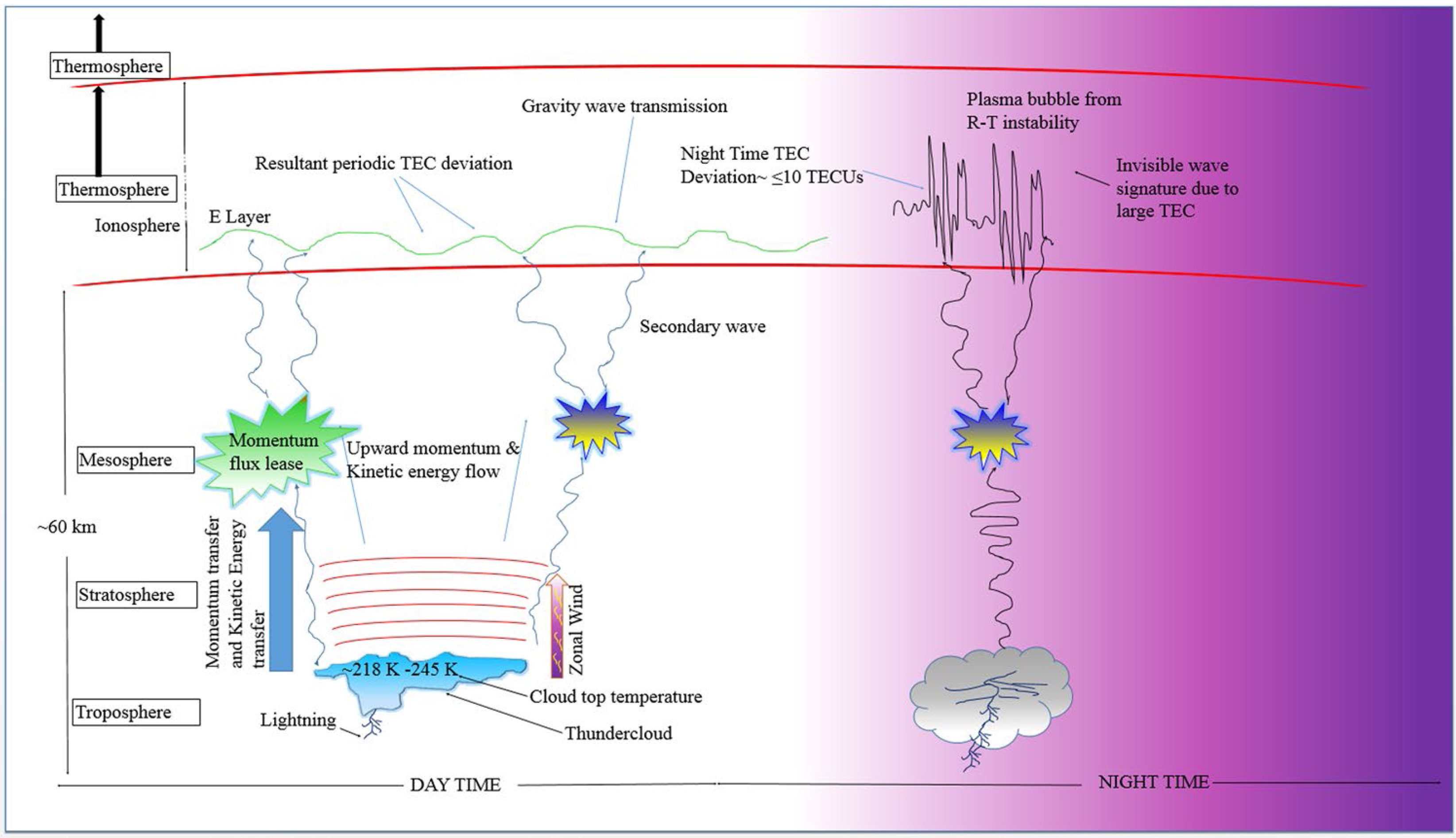The Earth's ionosphere, extending about 80 to 1,000 km above the earth's surface, connect the outer space and the middle atmosphere, and it is an important part and key layer in the whole sun-earth system. The coupling and interaction between the upper and lower atmosphere has always been a frontier and hotspot of the atmospheric science and solar-terrestrial physics.
However, the understanding of the equatorial ionospheric responses to thunderstorms remains a mystery due to the peculiarities in the dynamics of the ionosphere over this region. In a recently published study in Scientific Reports, the Congo Basin, located in the equatorial region, is studied because the region is considered to be the most active regions of lightning and severe thunderstorms in the world.
In the study, Dr. Babalola OGUNSUA, a postdoctoral fellow from Nigeria with Xiushu QIE’s research group from the LAGEO laboratory of the Institute of Atmospheric Sciences at Chinese Academy of Sciences, used ground-based World Wide Lightning Location Network (WWLLN) observations, combined with the ionospheric total electron content (TEC) measured from the communication path between the Global Positioning System (GPS) satellite and the GPS receiver station in the West Africa-Congo basin to trace the thunderstorm effect using polynomial filtering and other methods.
The team found solid evidence of the impact of tropospheric thunderstorms on the ionospheric electron content. OGUNSUA said, “We found that changes in the ionospheric electron content resulting from thunderstorms propagates from the location of the thunderstorm to a specific direction, with high peaks of the total electron content deviation, and the gravity waves induced by thunderstorms oscillates from 16 and 76 minutes.”

Fig 1. An illustration of the atmospheric wave dynamics from convective processes and ionospheric responses. (Image by B. OGUNSUA)
The team also mentioned in their paper that "the dynamics of the equatorial ionosphere are suppressed by the impact of thunderstorm activity during the day with visible gravity wave effects, and the effect of the gravity wave is negligible at night due to the plasma bubbles and large scale TEC deviation".
With this study, the team believes, the global scientific community will have a better understanding of the equatorial ionosphere in terms of its responses to extreme tropospheric events, with additional information for improved modelling of the equatorial ionosphere.
Citation:
Ogunsua, B.O., Srivastava, A., Bian, J. et al. Significant Day-time Ionospheric Perturbation by Thunderstorms along the West African and Congo Sector of Equatorial Region. Sci Rep 10, 8466 (2020). https://doi.org/10.1038/s41598-020-65315-3
